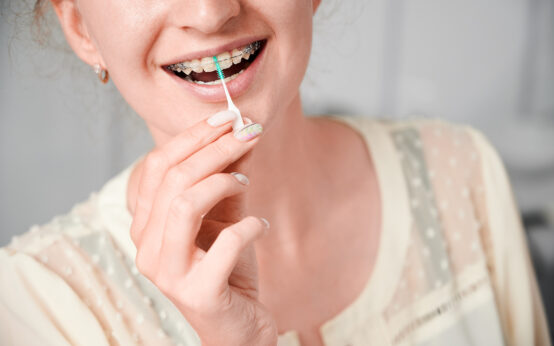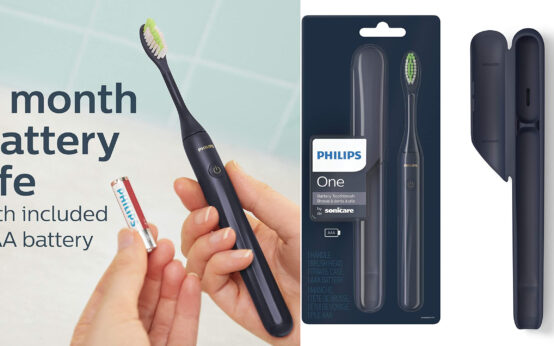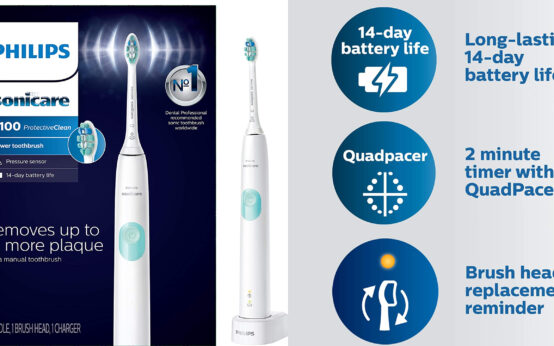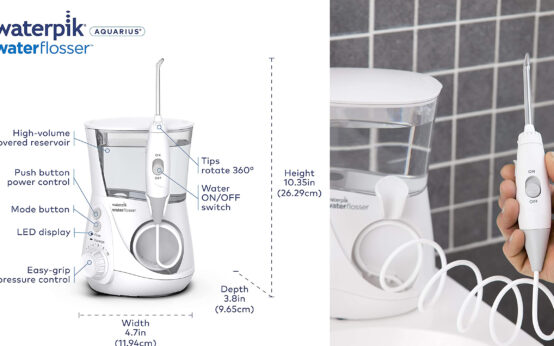There are several reasons to brush and floss regularly, including reducing plaque and removing bacteria. Fluoride is a key ingredient for strong tooth enamel. Flossing is important for cleaning hard-to-reach spots like between the teeth and under the gum line. Brushing alone won't remove plaque, but combined with floss, daily oral hygiene is a must. Here are some tips to make brushing and flossing more effective.
Table of Contents
Fluoride strengthens tooth enamel
In addition to strengthening tooth enamel, fluoride helps teeth resist cavities. Cavities start when acidic reactions in the mouth break down the mineral layers in your teeth. Fluoride remineralizes tooth enamel and protects against acid attacks. When brushing or flossing, you should include fluoride toothpaste in your daily routine to prevent cavities and improve oral health. The benefits of fluoride toothpaste are many and should be emphasized by your dentist.
Flossing is a vital part of your daily oral care routine. It helps remove food particles and bacteria from the teeth, stimulating saliva production. Flossing also removes bacteria that cause cavities and gum disease. After brushing and flossing, use fluoridated mouthwash to further strengthen your tooth enamel. If you're unsure of which way to brush, use mouthwash with fluoride to remove bacteria and food debris that can cause cavities.
You can get fluoride from drinking water or through toothpaste. Drinking water contains fluoride in low concentrations, but fluoride toothpaste provides a much higher dose for a longer period of time. A dentist can also apply fluoride directly to your teeth. If your water isn't fluoridated, you may need to pay for the treatment out-of-pocket.
Tooth decay is a leading cause of dental caries. Poor oral hygiene encourages the growth of bacteria and acids that eat and erode tooth enamel. The acidic environment in the mouth fosters the growth of plaque bacteria and damages tooth enamel. Tooth decay occurs when this happens. By removing these bacteria and restoring the mineral level of your teeth, you can prevent dental caries and tooth decay.
Flossing removes plaque from hard-to-reach spots
When you brush your teeth, you can't get to every crevice. However, flossing is important because over time, plaque can accumulate between your teeth. Regular flossing helps remove plaque from these areas, and can even reduce gum disease and tooth decay. Flossing also prevents tooth decay by removing food particles that get caught between your teeth. It also helps strengthen your gums by removing plaque from hard-to-reach places.
Flossing is essential for maintaining dental health. Plaque can build up in the back of the mouth, where it can cause tooth decay and gum disease. The problem is that many people don't notice these areas when they brush and floss, so they do not brush or floss regularly enough to keep their teeth clean. Luckily, there are several ways to remove plaque from hard-to-reach spots, including flossing.
The first step in preventing tooth decay and gum disease is to floss. Flossing removes plaque and food from hard-to-reach spots on the teeth. Secondly, flossing increases blood circulation in the gums, which in turn helps to maintain healthy and strong gums. After all, strong gums help keep your teeth strong. By regularly flossing, you will be helping yourself prevent cavities, tooth decay, and other dental problems.
A regular flossing routine is highly recommended by the American Dental Association. It is an effective way to remove plaque that builds up between the teeth and along the gum line. Not only does flossing help prevent plaque buildup, it also strengthens the gums. When your gums are strong, they are more resistant to bacteria and plaque. It also prevents bad breath, which is the result of tooth decay.
It reduces plaque concentration between the teeth
Studies have found that the optimal sequence for brushing and flossing has been shown to significantly reduce plaque concentration between the teeth. A recent study has evaluated the efficiency of brushing and flossing first on 25 dental students. It found that the former routine reduced plaque and retained fluoride more efficiently than the latter. This study has important implications for people who practice good oral hygiene habits. Continue reading to learn more about the proper oral hygiene regimen.
The American Dental Association recommends that you brush your teeth for at least two minutes twice a day with fluoridated toothpaste and floss to remove plaque and food particles. Flossing is especially important because toothbrushes can't reach these areas. Plaque consists of bacteria that feed on food particles and sugar that remain in the mouth after eating. These bacteria release acid which can wear away enamel, resulting in cavities.
The researchers also found that waxed floss is easier to slide between the teeth, which increases the likelihood of removing plaque from the interdental space. Waxed floss also reduces plaque concentration between the teeth. Another study cited in the Dentistry Journal found that a combination of brushing and flossing can reduce the concentration of plaque in the interdental spaces. It is important to note that this study did not provide professional health advice, diagnose or treat any disease.
The benefits of brushing and flossing are obvious. Brushing gets the fluoride and bacteria between the teeth in these spaces. Flossing removes these particles and improves the fluoride concentration in interdental plaque. The combined actions of brushing and flossing remove bacteria from the surfaces of the teeth, including below the gum line. Moreover, they are both essential to maintaining good oral health.
It removes bacteria from under the gum line
While brushing and flossing are important in keeping teeth and gums clean, they do not clean beneath the gum line. This can lead to cuts in the gums. Flossing is also an effective way to remove bacteria. It should be done at least once daily and should be performed in conjunction with brushing. If you do not have time to brush or floss your teeth below the gum line, you can always visit a dentist. Professionals have the tools and products necessary to clean below the gum line.
Plaque forms because of bacteria that live below the gum line. These bacteria produce toxins that cause bone and connective tissue to break down. These changes can cause teeth to loosen or even fall out. In addition to plaque, these bacteria live under the gum line, so it's important to brush and floss daily to remove them. Afterward, the bacteria will return to their original location. Flossing and brushing can remove this plaque, which can lead to advanced gum disease.
A lack of good oral hygiene can result in dental plaque and gingivitis. Plaque is a sticky film that forms on the teeth after eating food or drinking. The bacteria present in plaque release acids that weaken tooth enamel and cause cavities. If this film is not removed, it can lead to gingivitis, a serious condition of the gums that can lead to tooth loss.
While brushing and flossing remove plaque from the surface of the teeth, there is a greater need to clean beneath the gum line. Flossing is the best way to clean these bacteria. By using dental floss, you can remove plaque, bacteria, and tartar from under the gum line. Using a water pick, also known as an oral pulsating irrigator, can remove food particles from the gum line and decrease bleeding and gum disease. It is not a replacement for brushing and flossing, but it can reduce bacteria beneath the gum line.
It prevents bad breath
Keeping hydrated is crucial in preventing bad breath. Drinking water helps to keep the mouth hydrated and salivary glands active, which in turn cleans the teeth and tongue. Consuming foods that are crunchy and raw are also good options, because they stimulate saliva production and help keep the mouth and teeth fresh. Here are some foods that fight bad breath:
Saliva production is decreased when we are thirsty or hungry. Consequently, eating less food can lead to bad breath. Therefore, drink plenty of water and chew your food well. Those who are dieting should drink plenty of water. Additionally, chewing food thoroughly can also help prevent the development of bad breath. Not eating regularly will lead to an increase in the level of bacterial growth. If you are constantly skipping meals, this can also contribute to bad breath.
Even if you have good oral hygiene habits and visit the dentist for regular dental cleanings, if you continue to experience persistently bad breath, it may be a symptom of a medical condition. Seeing a dentist will rule out any medical issues that could be causing your bad breath. Once a medical problem is ruled out, brushing and flossing will prevent bad breath. But if you still experience persistent bad breath, you should visit your dentist for a thorough checkup.
In addition to brushing your teeth, it is also important to brush your tongue. Various bacteria that cause bad breath can live on your tongue. Regular brushing will eliminate these bacteria from your mouth. You can also use sugar-free gum, candies, and artificial saliva to help your mouth secrete saliva. This will also help control the smell of your breath. These are just a few of the basic tips you should follow if you want to enjoy fresh breath for a long time to come.



 Brushing and Flossing With Braces
Brushing and Flossing With Braces  Philips One by Sonicare Battery Toothbrush Review
Philips One by Sonicare Battery Toothbrush Review  Philips Sonicare ProtectiveClean 4100 Electric Power Toothbrush Review
Philips Sonicare ProtectiveClean 4100 Electric Power Toothbrush Review  Waterpik Aquarius Water Flosser Professional Review
Waterpik Aquarius Water Flosser Professional Review